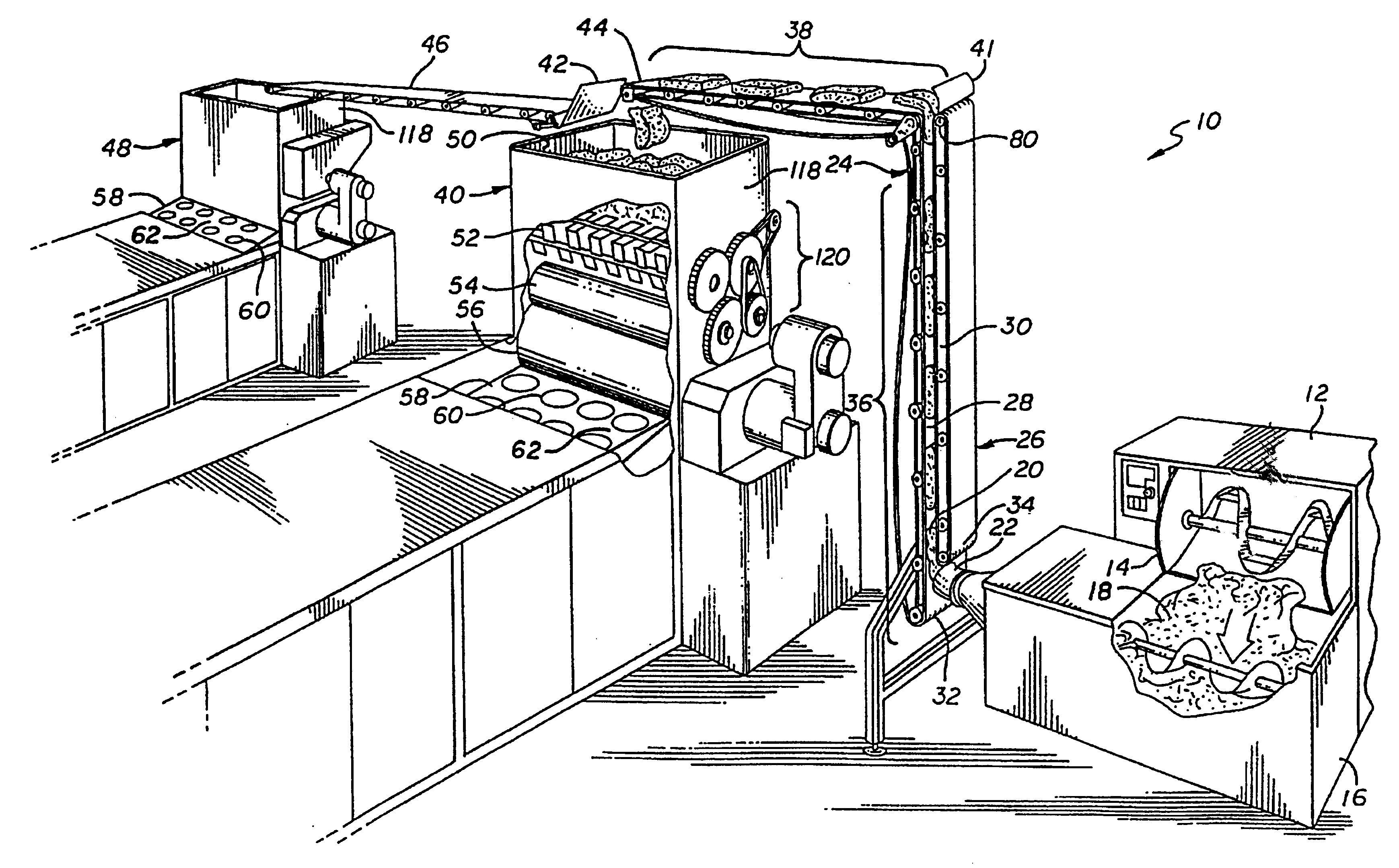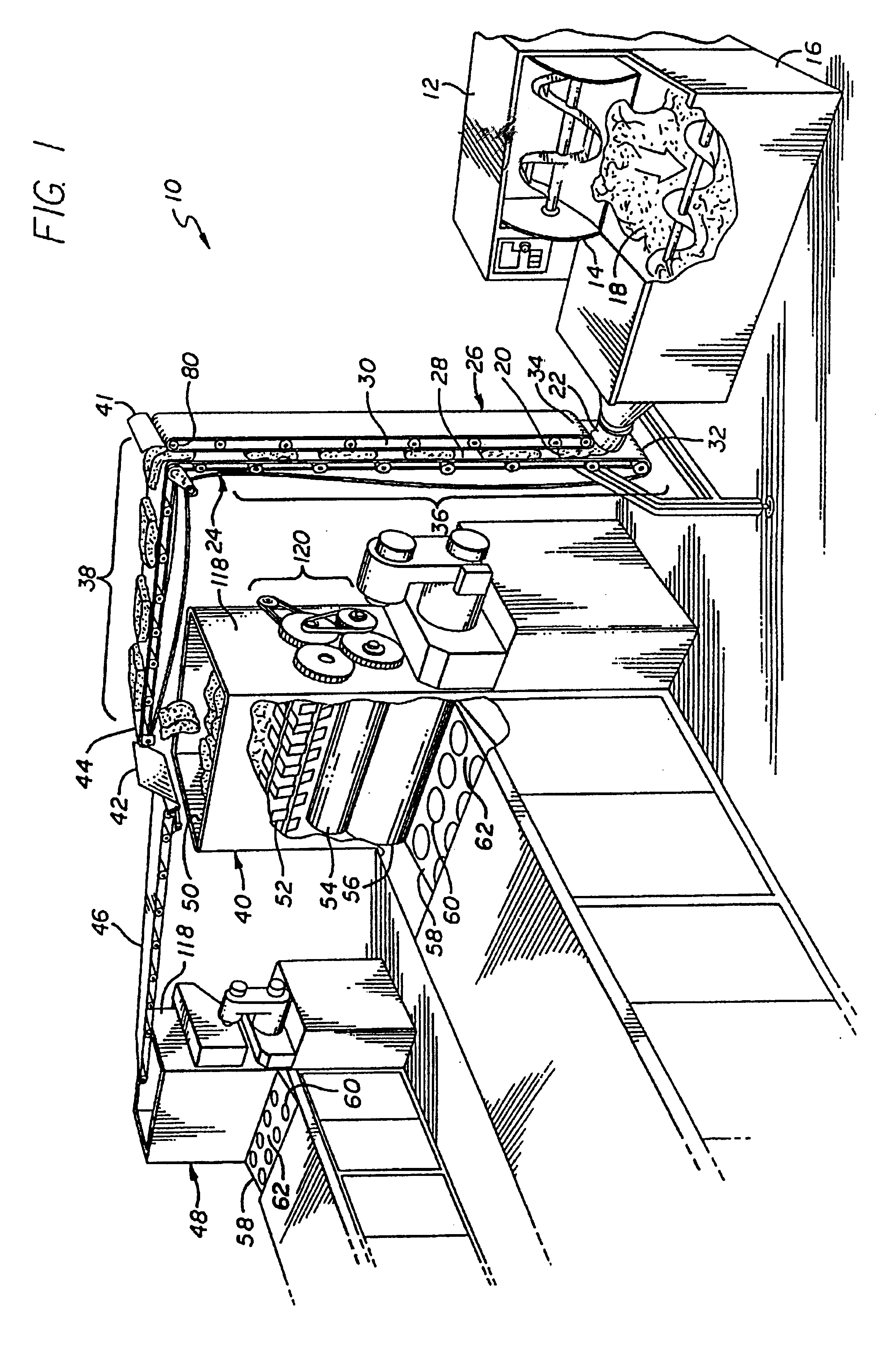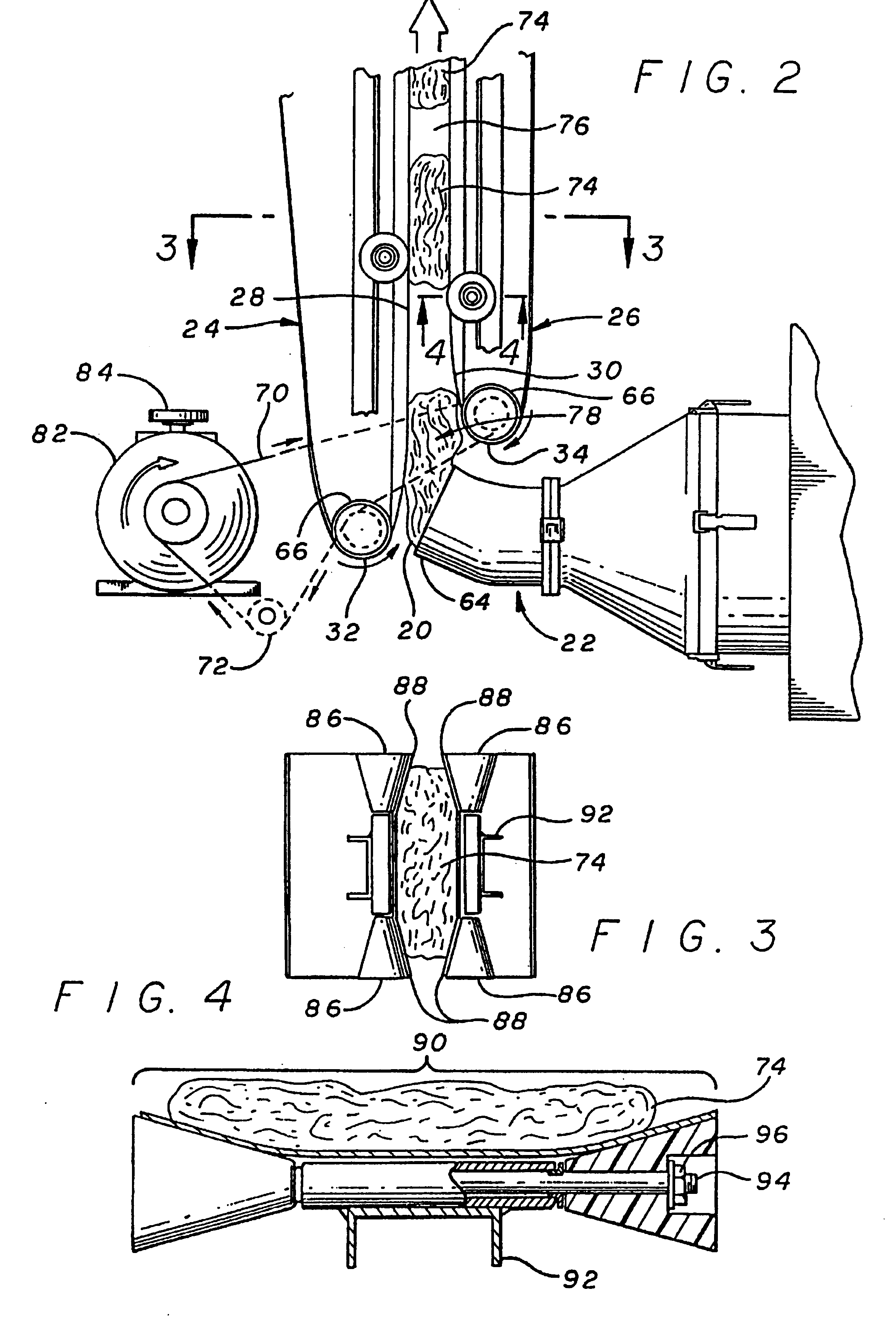Methods for handling masa
- Summary
- Abstract
- Description
- Claims
- Application Information
AI Technical Summary
Benefits of technology
Problems solved by technology
Method used
Image
Examples
Embodiment Construction
As shown in the exemplary drawings, the present invention is embodied in a masa handling system, generally referred to by the reference numeral 10, for use within a food processing system which produces a food product made from masa. Masa is a dough produced by cooking whole corn and grinding it wet or by combining instant corn masa hour with water in a commonly available mixer. This dough is generally referred to as "masa". However, the term "masa" as used herein refers to this corn dough and other doughs having similar characteristics.
The preferred masa handling system 10 (FIG. 1) is a part of a larger arrangement of apparatus intended for the commercial production of tortillas or other food having a masa dough as an ingredient. The general arrangement of the preferred masa handling system 10 will now be described. A commonly available commercial mixer 12 is located at the beginning of the production line. The mixer 12 has a pivoting door 14 which can rotate downward towards a mas...
PUM
 Login to View More
Login to View More Abstract
Description
Claims
Application Information
 Login to View More
Login to View More - R&D
- Intellectual Property
- Life Sciences
- Materials
- Tech Scout
- Unparalleled Data Quality
- Higher Quality Content
- 60% Fewer Hallucinations
Browse by: Latest US Patents, China's latest patents, Technical Efficacy Thesaurus, Application Domain, Technology Topic, Popular Technical Reports.
© 2025 PatSnap. All rights reserved.Legal|Privacy policy|Modern Slavery Act Transparency Statement|Sitemap|About US| Contact US: help@patsnap.com



